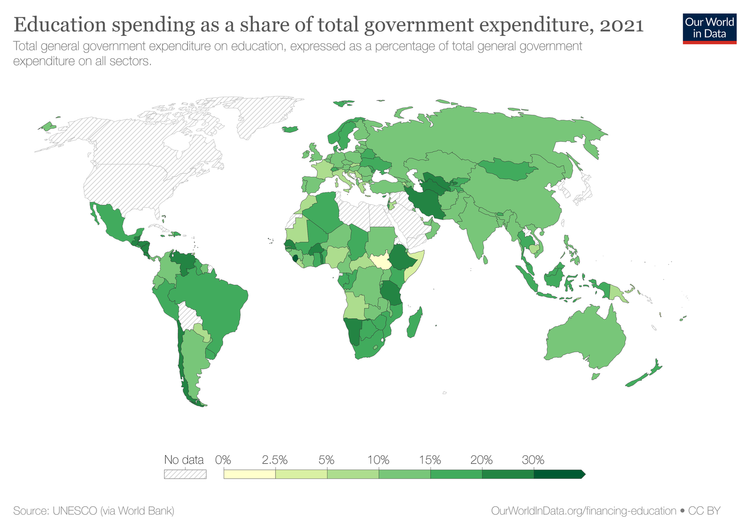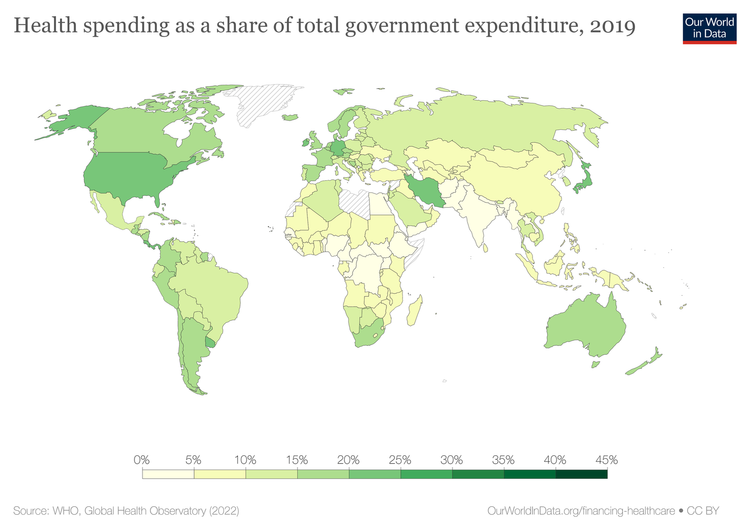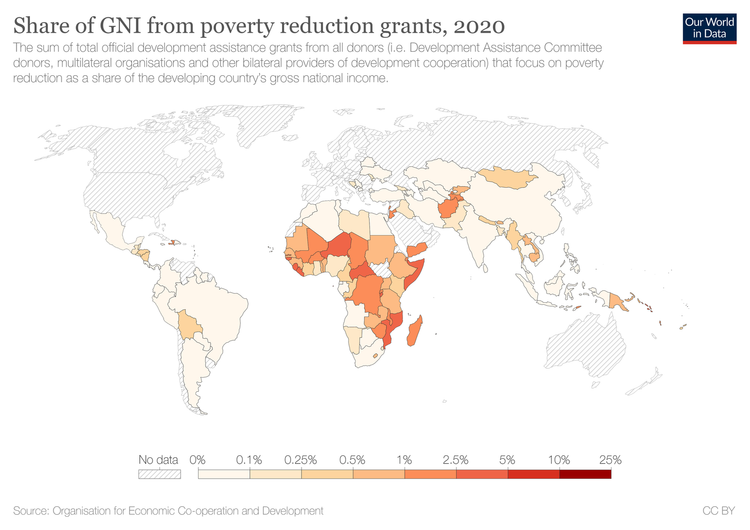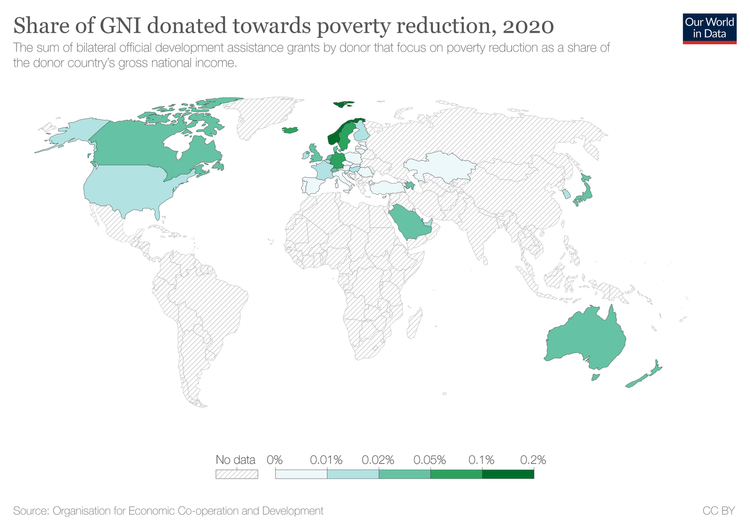Sustainable Development Goal #1 is to end poverty in all its forms everywhere.
Within SDG #1 are 7 targets, of which this episode will focus on Target 1.a, which is:
Ensure significant mobilization of resources from a variety of sources, including through enhanced development cooperation, in order to provide adequate and predictable means for developing countries, in particular least developed countries, to implement programmes and policies to end poverty in all its dimensions.
Target 1.a is the first example of a target designated by letters, rather than the previous targets’ designation by numbers (for example, 1.1 and 1.2). For all the SDGs, number-designated targets measure outcomes, whereas letter-designated targets represent means of implementation.
To measure target 1.a, there are two indicators:
Indicator 1.a.1: Total official development assistance grants from all donors that focus on poverty reduction as a share of the recipient country’s gross national income.
Indicator 1.a.2: Proportion of total government spending on essential services (education, health and social protection).
Indicator 1.a.1 focuses upon the concept of official development assistance, or ODA, synonymous with international aid.
The aim of development aid is to improve the economic and social development of humans living in countries which have not yet fully industrialised and are therefore considered ‘developing’ in the parlance of the field of international development.
The degree to which a country is ‘developing’ is often defined by a country’s score in the Human Development Index, a composite measure of life expectancy, education, and per capita income.
Separate, though entwined, to development aid, is humanitarian aid, more synonymous with logistical assistance in the face of disaster or conflict.
Official development assistance (ODA) is a concept defined in 1969 by the Development Assistance Committee of the OECD, or Organisation of Economic Cooperation and Development.
The OECD, headquartered in Paris, France, is an international organisation of 38 member states, predominantly developed countries, with a focus on economic policies.
The Development Assistance Committee, or DAC, consists of 30 OECD members, constituting the largest aid donors, as a forum to discuss aid and poverty reduction efforts.
The predominant means of measuring donor amounts is as a percentage of the donor country's gross national income (GNI) otherwise known as gross national product (GNP).
Gross national income is very similar to the concept of GDP, but by contrast, GNI includes the economic output of foreign residents of the country.
The OECD DAC has an official List of ODA Recipients, all the developing countries and territories eligible to receive ODA. Included are dollar flows made via so-called ‘multilateral institutions’, such as the World Bank or International Monetary Fund.
To be counted as ODA, donor flows must come from government agencies, with the aim of economic development and welfare of developing countries, and must be concessional i.e., either outright grants with no obligation to be repaid, or loans with much more generous repayment terms than loans available commercially in the market.
The sectors counted toward poverty reduction for the purposes of Indicator 1.a.1 include food aid, basic health, education, water and sanitation, population programmes and reproductive health.
Indicator 1.a.2 is defined as the total expenditure on all levels of education, health, and social protection from all levels of government, as a percentage of overall government expenditure.
The rationale of Indicator 1.a.2 is to evaluate the priority given to each government’s focus on improving wellbeing via public expenditure on education, health, and social protection in comparison to in other sectors.
As the Millennium Development Goals ended in 2015, with it did UNESCO’s Education for All campaign. Subsequently, at the 2015 UN World Education Forum in Incheon, Korea, the Education Framework for Action was adopted, to ensure SDG #4 is met by 2030.
Relevant to Indicator 1.a.2 was the Education 2030 Framework for Action’s recommendation of 15-20 percent of public expenditure spent on education.
However, between 2015 and 2018, only 30 percent of countries had spent the recommended 15-20 percent of expenditure on education.
Furthermore, ODA grants intended for poverty reduction toward basic social services and food aid represented only 0.02 percent of gross national income of the donor countries of the OECD’s Development Assistance Committee in 2019.













